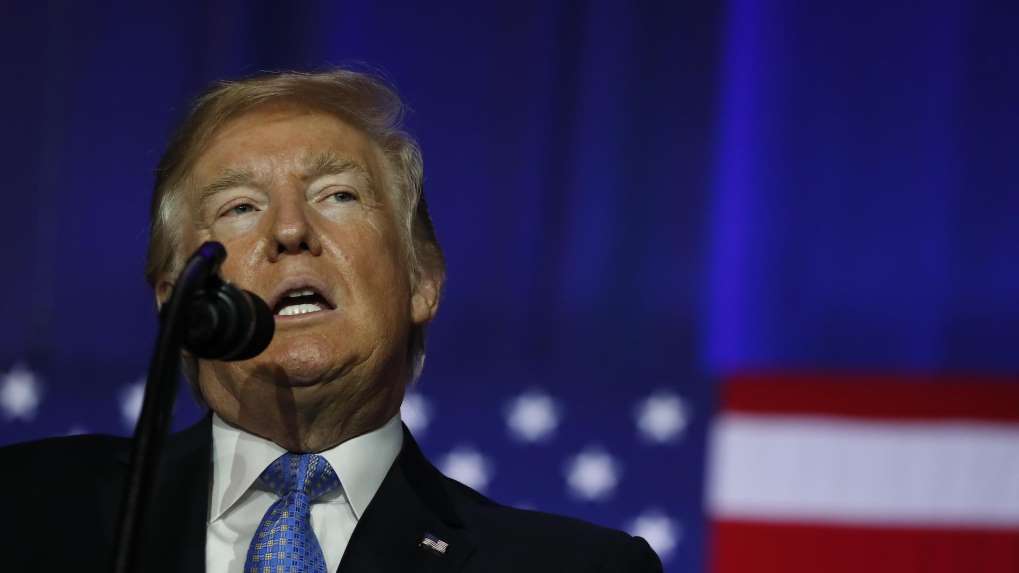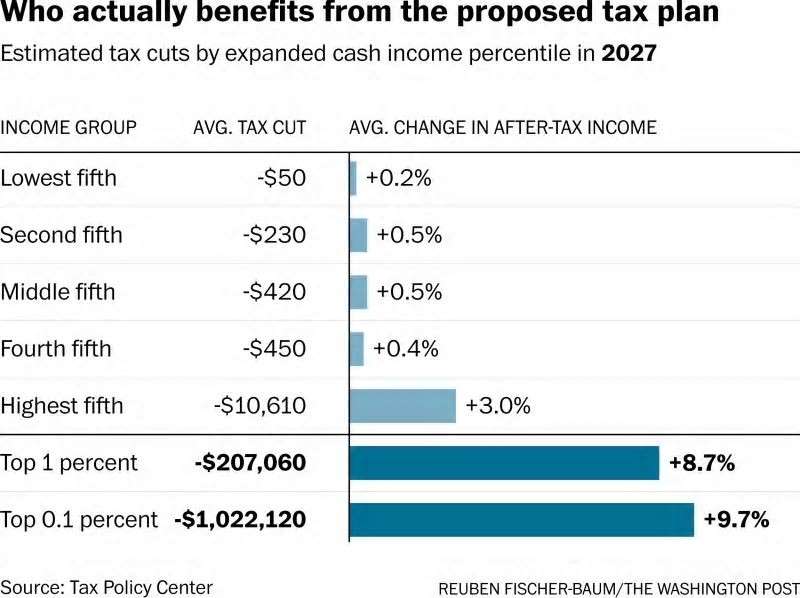September 29, 2017
The Republican tax plan would deliver a major benefit to the top 1 percent of Americans, according to a new analysis by a leading group of nonpartisan tax experts that challenges the White House's portrayal of its effects.

September 29, 2017
The Republican tax plan would deliver a major benefit to the top 1 percent of Americans, according to a new analysis by a leading group of nonpartisan tax experts that challenges the White House's portrayal of its effects.

The plan would deliver far more modest tax cuts to most other households — an average cut of $1,700 for households in 2027, according to the report. But the results would be unevenly spread, with 1 in 4 households paying more in taxes.
Despite repeated promises from Republican lawmakers that the plan is designed to provide relief to the middle class, nearly 30 percent of taxpayers with incomes between $50,000 and $150,000 would see a tax increase, according to the study by the Urban-Brookings Tax Policy Center. The majority of households that made between $150,000 and $300,000 would see a tax increase.
Those trends were credited to the loss of itemized deductions, particularly the ability to deduct state and local property taxes from income.
The loss of the personal exemption, which shields $4,050 of income from federal taxes for every household member, also played a major role in increasing taxes for some households — an effect that would get worse over time, because the amount of the personal exemption kept pace with inflation.
Meanwhile, 80 percent of the tax benefits would accrue to those in the top 1 percent. Households making more than about $900,000 a year would see their taxes drop by more than $200,000 on average.
This week at a speech in Indianapolis, Trump described the effects of the tax plan very differently: “We're doing everything we can to reduce the tax burden on you and your family. By eliminating tax breaks and loopholes, we will ensure that the benefits are focused on the middle class, the working men and women, not the highest-income earners.”

The analysis also found the plan would provide disproportionately large benefits for businesses compared to what the middle class and low-income Americans would receive.
“A major feature is tax collections would shift dramatically, from businesses to individuals,” said Eric Toder, a co-director of the Tax Policy Center.
The tax plan would increase the deficit by $2.4 trillion over the first decade.
“One thing I find troubling about big, deficit-financed tax cuts is it kind of looks like a free lunch,” said Len Burman, an institute fellow at the Urban Institute who formerly worked at the nonpartisan Congressional Budget Office.
Burman pointed out that the burden of the postponed taxes could fall on lower- and middle-income people in the future, either through tax increases or cuts to programs that benefit those groups. What was surprising, he added, was that even in this context, there were groups that did not appreciate the benefits of that free lunch.
White House officials have given conflicting accounts of the impact of the tax cuts on the wealthy. President Trump has said they would receive no benefit, while National Economic Council Director Gary Cohn has said it's irrelevant whether they benefit because all taxpayers should benefit. Treasury Secretary Steven Mnuchin has said some upper-income Americans will benefit while others won't. Meanwhile, the nine-page framework released on Wednesday predicted the wealthy would benefit but stipulated that they shouldn't benefit more than anyone else.
Courtesy/Source: Washington Post
















































































































